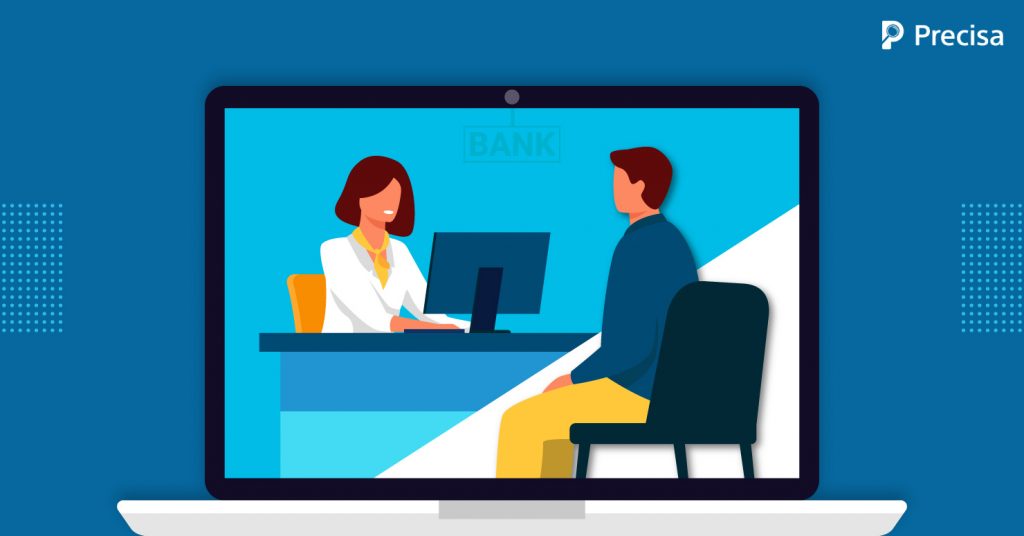How Banks Can Build Customer Trust Post-COVID

The 2020 pandemic sabotaged the customer relations and trust banks had built over the years. According to a new Accenture analysis, during the COVID-19 pandemic, replacing in-person branch contacts with impersonal digital transactions via online and mobile channels has accelerated the ongoing decline of consumer trust in banks.
Hence, banks need to focus on winning back their customer’s trust. However, trust isn’t something that can be built overnight. It will require a full-fledged strategy and a customer-centric approach to regain the old and healthy customer-to-bank relationship.
Here, we discuss a few tips that will help you win back the trust of your customers post-COVID.
Five Tips to Help Bank Win Back Customers’ Trust Post-COVID
Banks were already undergoing a rapid digital metamorphosis before the pandemic. As a result, they were already aggressively pushing for the adoption of digital solutions.
But there was no clear trajectory about how fast or slow this digitisation trend would set until COVID-19 kicked in. The result: hasty digitisation, consequently half-baked services and deviation from the critical human presence in many touchpoints, which lead to further deterioration in trust.
That said, banks, NBFCs, and lending institutions must strengthen their digital strategy strategically, starting from the core elements.
1. Enable Faster Loan Processing
That’s where banks and NBFCs can step in and make the lives of financially strained and disrupted clients easier. Lending institutions can offer easy, accessible paperless loans. But, banks also need to keep up with the emerging trends in loan products.
Faster loan processing is important for helping ease customers’ financial trouble and crucial to retaining them. Since the pandemic drove banking online, people have been accustomed to hassle-free financial solutions. Now dragging them back to the era of long queues, multiple branch visits, and unnecessary paperwork is simply going to drive them away.
2. Hike Up the Security Measures
The era of digital banking also brought about a higher risk of online fraud and scams along with faster and seamless banking. Hence, an important step to restoring your customer’s trust is hiking up your bank’s security measures and making sure to highlight them.
Double-step authentication, end-to-end encrypted banking operation, and OTP-protected transactions are essential for a post-Covid trust-building strategy.
Every financial institution has some degree of security. Yet online theft and frauds are rampant. This suggests that the existing tools aren’t efficient enough and needs a revamp. Hence, banks and financial institutions need to follow suit and adopt newer securing tech to give clients peace of mind.
3. Maintain Transparency
Customers are well aware of the rising rate of financial frauds and data-related scams. This has rapidly increased their concern about how their data is being used. In fact, McAfee Corp’s 2021 Consumer Security Mindset Report found 78% of Indian respondents said they were most concerned about their financial data being stolen, such as credit card or banking information.
In this scenario, banks need to gain back that trust. The only way to do so is to maintain complete transparency on how user’s data is used. After all, higher-level transactions can only be made secure if banks or lenders have enough information to authenticate the transaction from the customer’s end. Luckily, the latest Account Aggregator framework makes financial data sharing swift, secure, and consensual.
A simple way to help customers trust lenders with their data is by introducing detailed privacy policy pop-ups before payment, and additional links to pages explaining why the banks need all the data and how they are using it to enable secure transactions.
4. Introduce New-Age Banking Solutions
There is no coming back from the tech boom set in as a result of the pandemic. Hence, banks and financial institutions have to up their game in a market where Big Tech aggressively blurs the line between traditional banking solutions and new-age ones.
Whether customers want to invest in a new fixed deposit or carry out regular transactions, getting everything done digitally and securely is the key. However, offering a virtual interface like they already have isn’t enough. These interfaces need to be enhanced for faster and simplified operation.
5. Sustain the Emotional Bonds
A Statista survey of over 59,000 customers from 28 nations unanimously voted ‘trust’ as the principal factor determining who to bank with. So goes without saying, sustaining the ‘trust factor’ is critical for banks.
“The pandemic-inspired increase in digital engagement is a double-edged sword for banks,” says Alan McIntyre, who leads Accenture’s Banking industry group globally.
“While it (digital boom) has allowed them (banks) to serve customers efficiently throughout the pandemic — and advanced their digital strategies by up to five years in some cases — it has pushed them to launch solutions that are functionally adequate but devoid of emotion. To forge strong customer connections, banks must reimagine the digital services they provide and make those connections more personal and relevant.”
How can Precisa help?
Mending customer relationships and winning their trust back can be overwhelming for banks, NBFCs and traditional lenders. And banks and financial institutions need little assistance in achieving this.
Precisa’s advanced bank statement analyzer tool minimises the hassle of going through long and tedious statements for loan applications — the core aspect of lenders at different levels.
Instead, lending institutions can use this tool to scan through the entire statement within minutes. In addition, the built-in security check and loan repayment probability analyzer eases loan processing and helps provide faster service to customers. So, reach out to Precisa today and learn how their technology can propel your lending business to the next level of growth. You can also sign up for a free trial and explore the product features.




